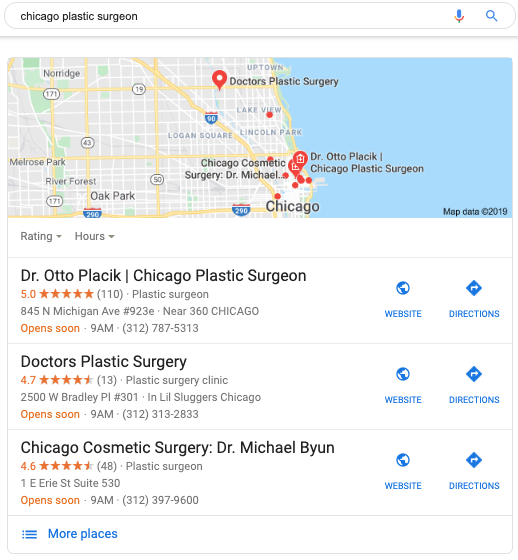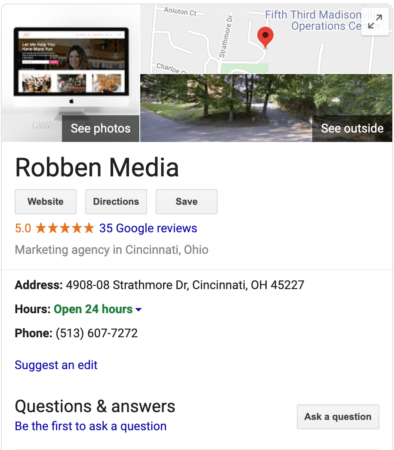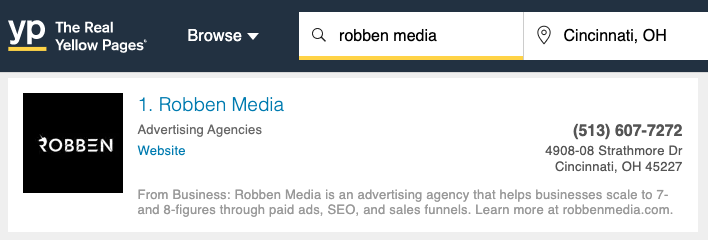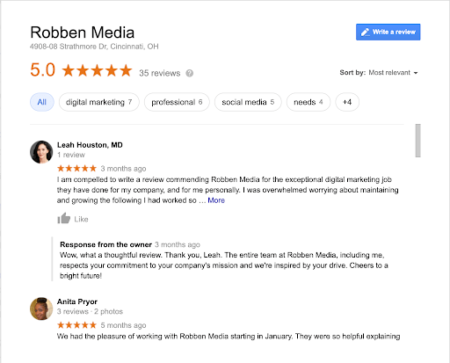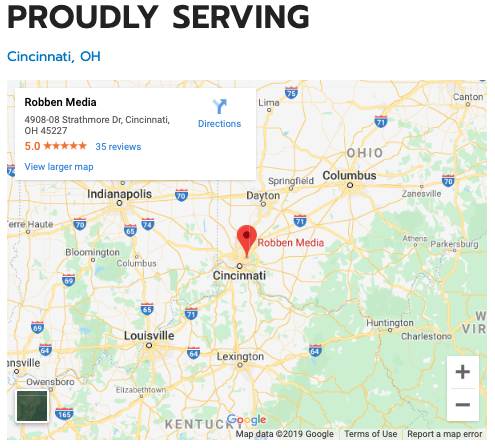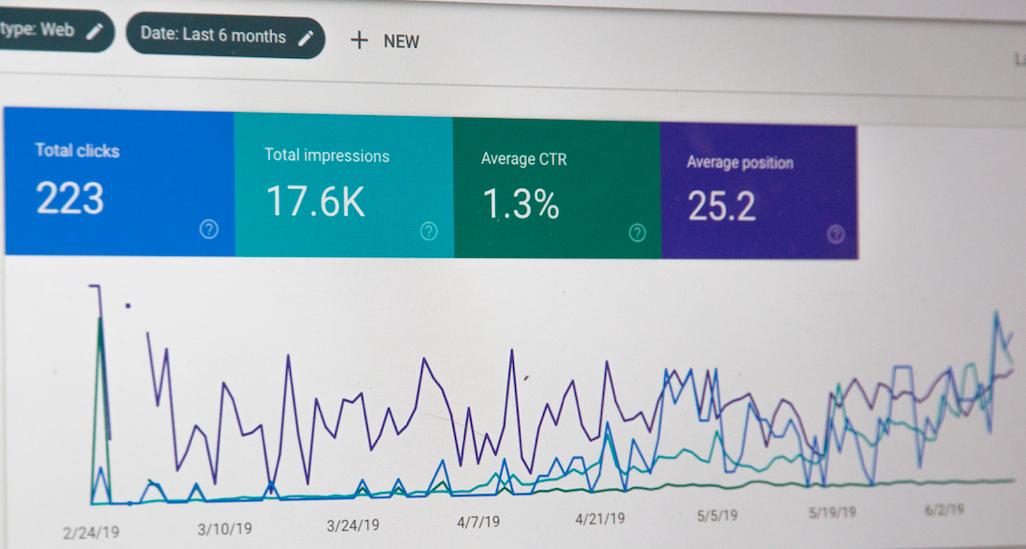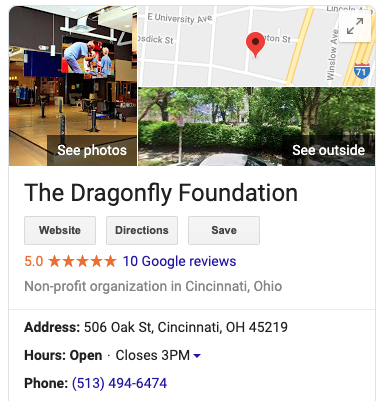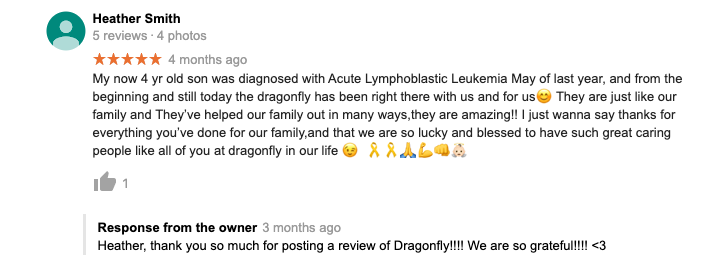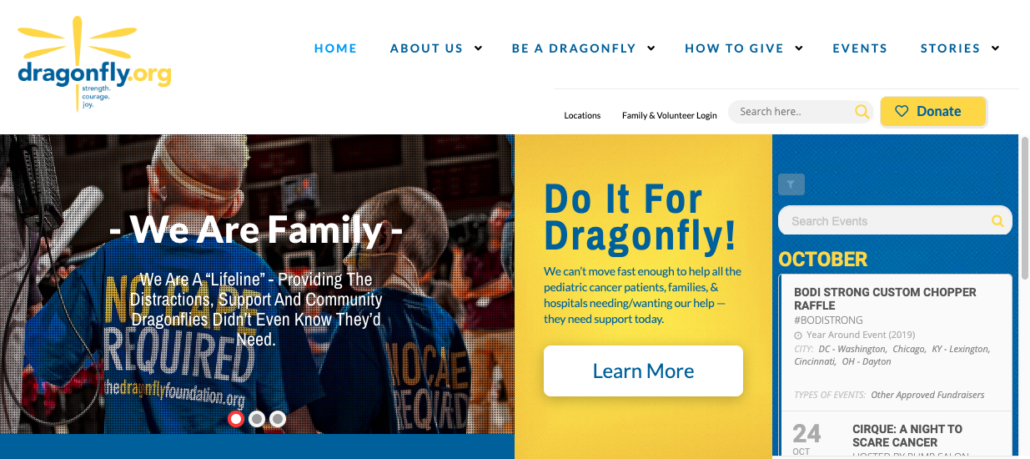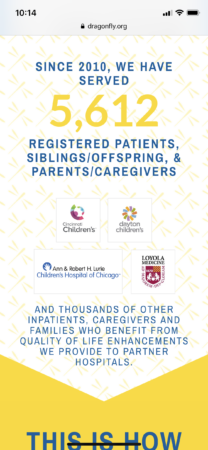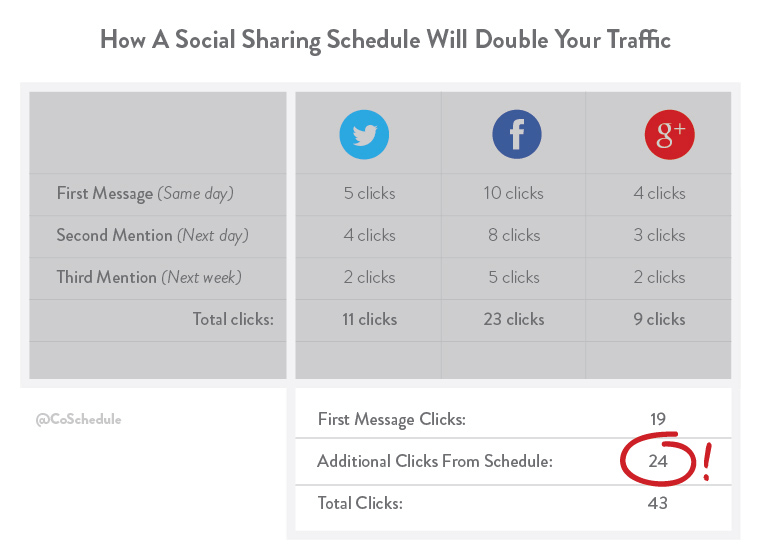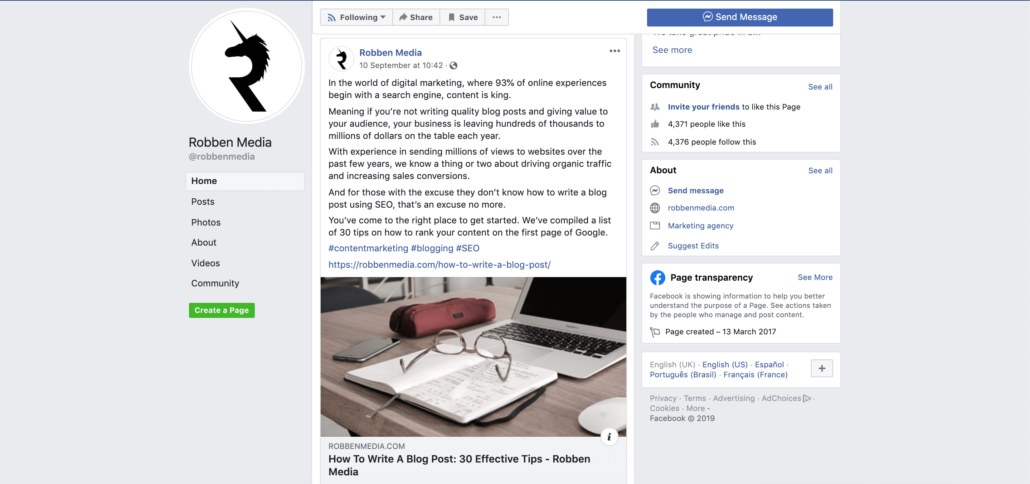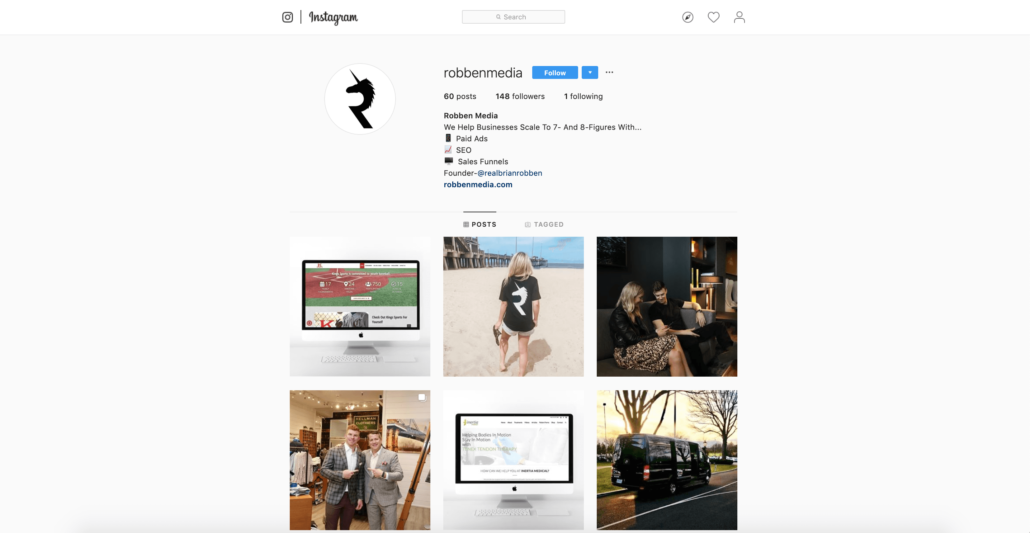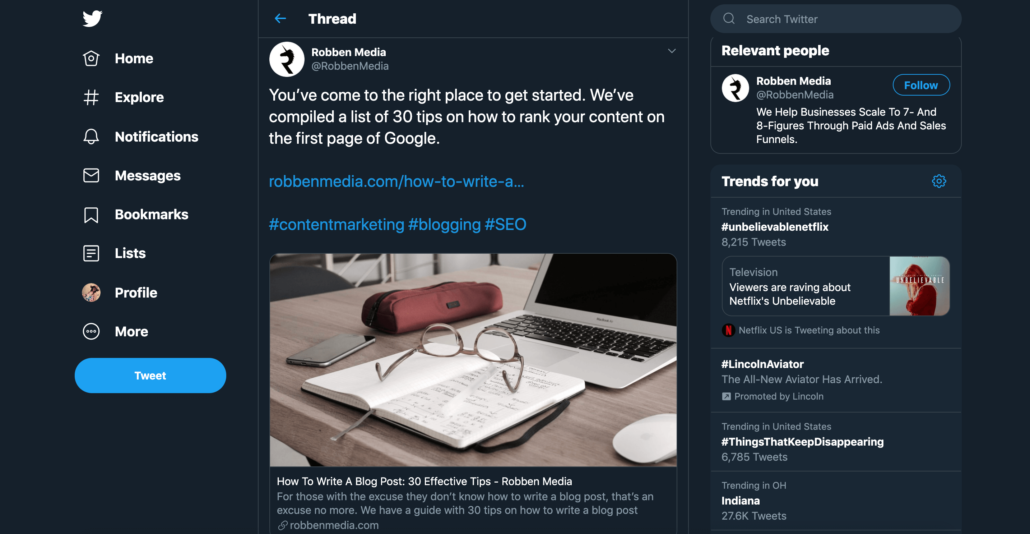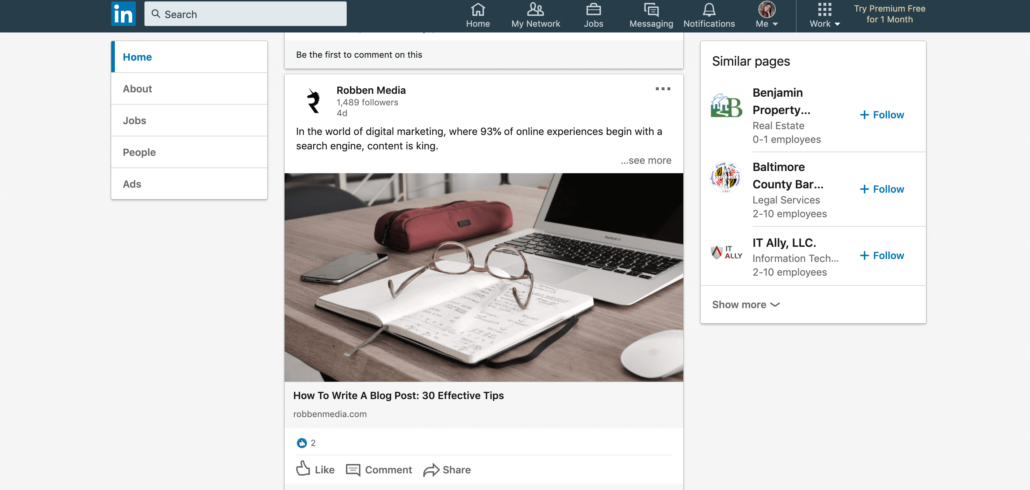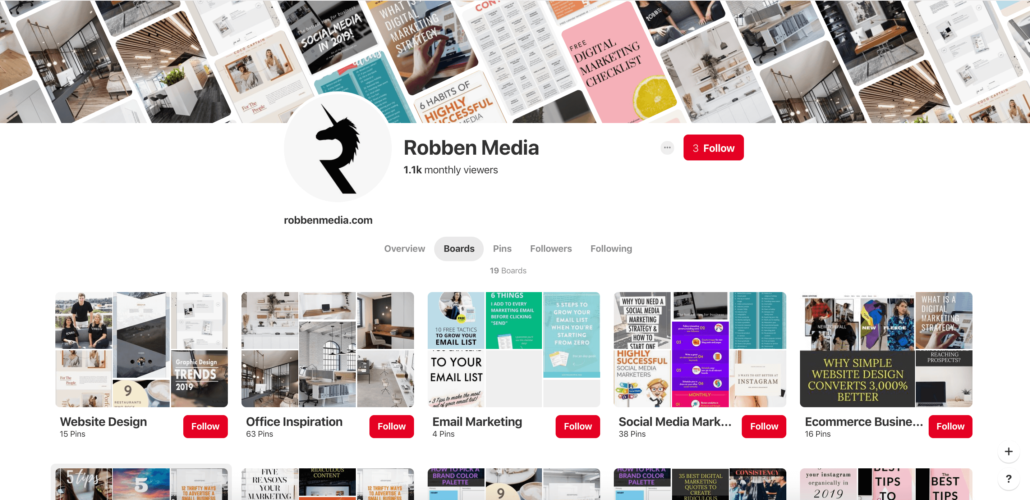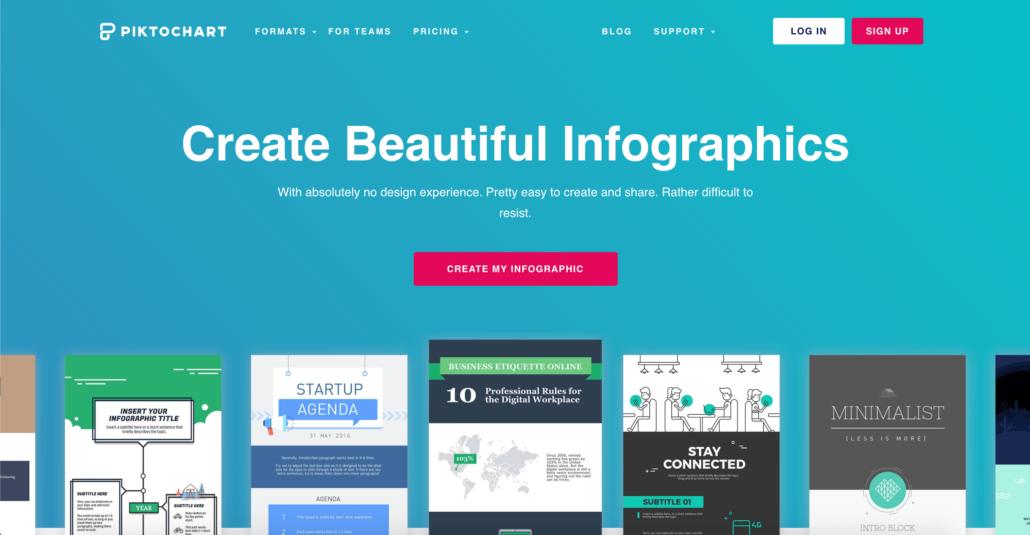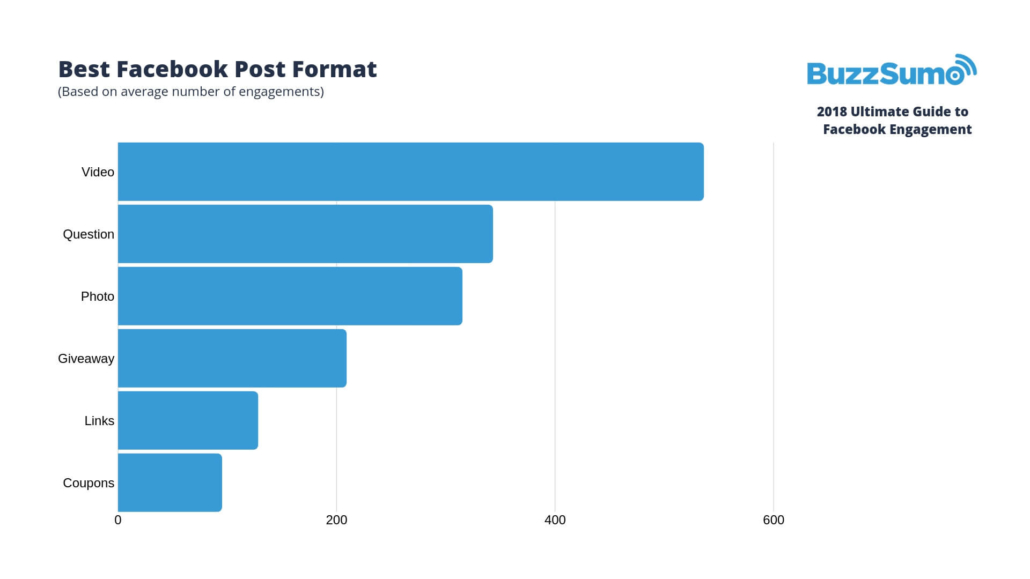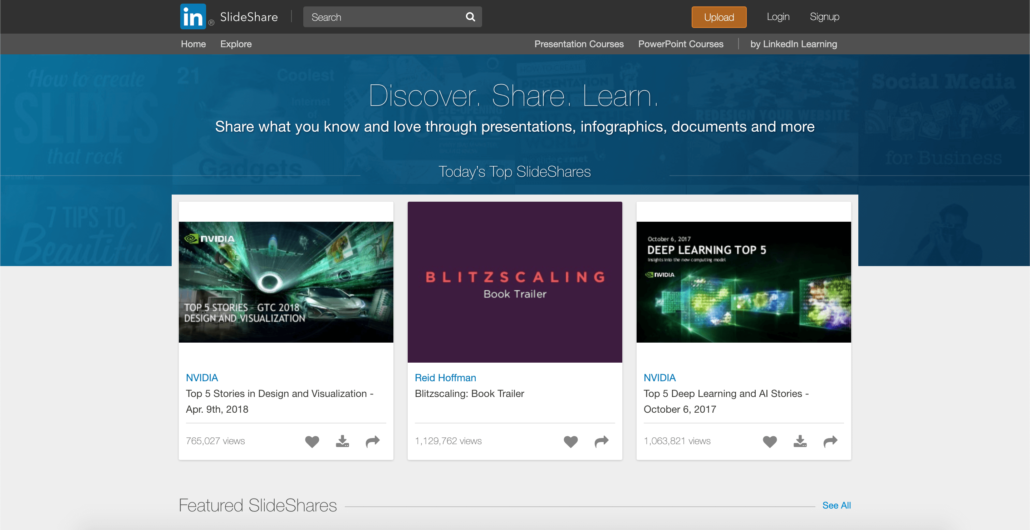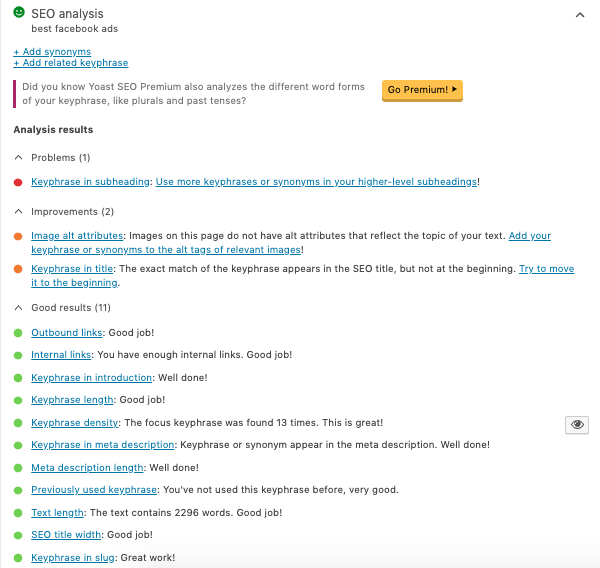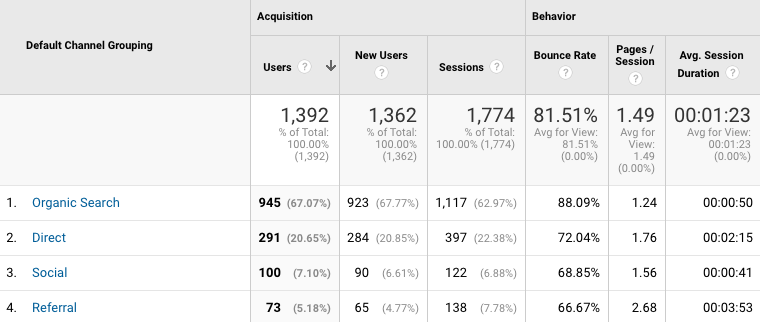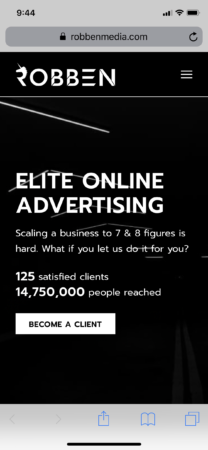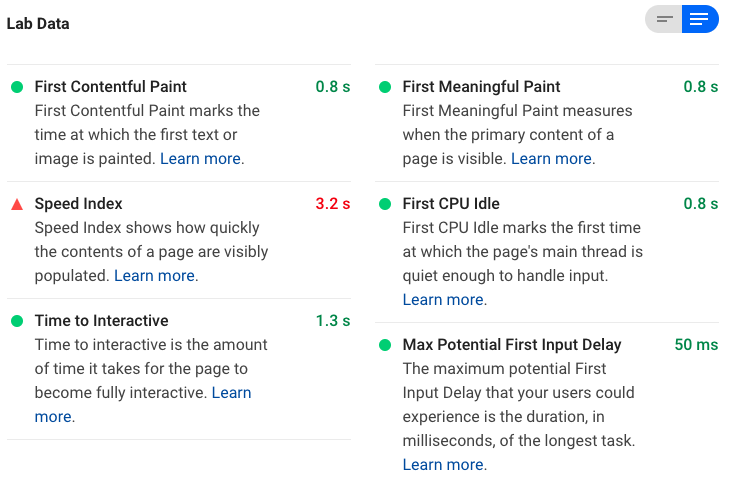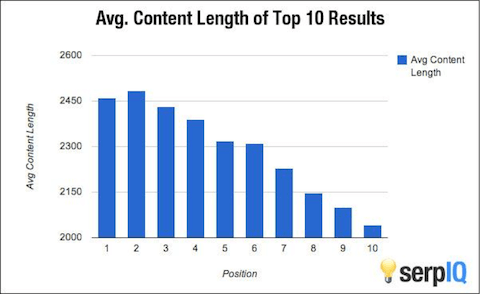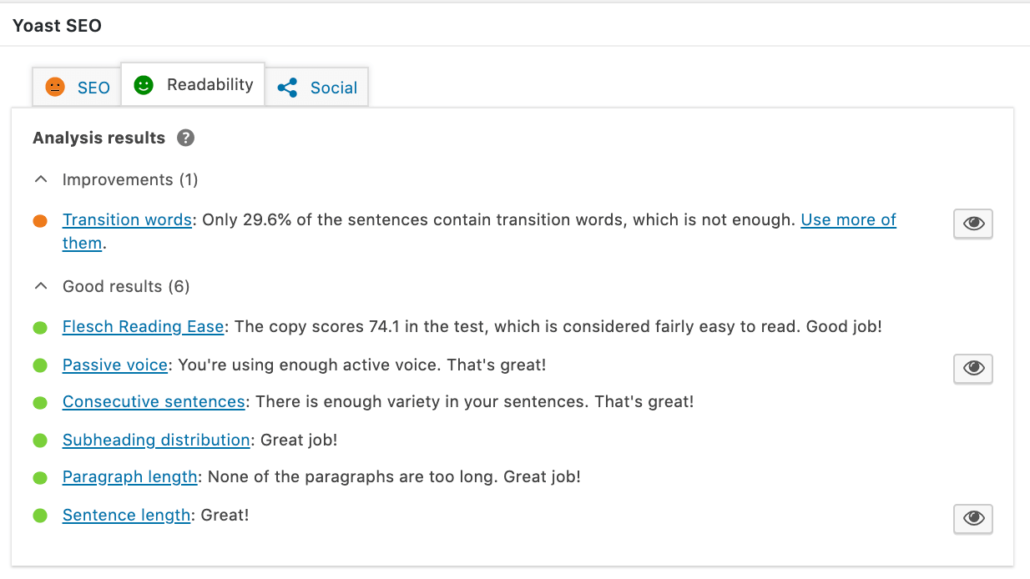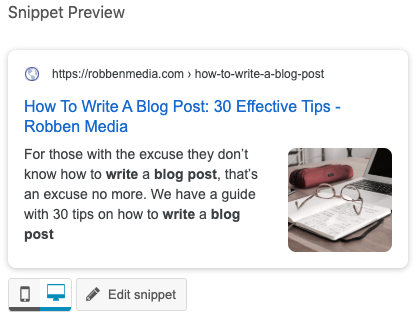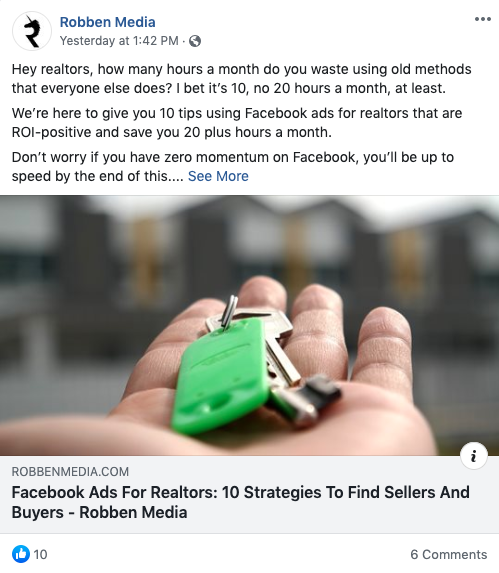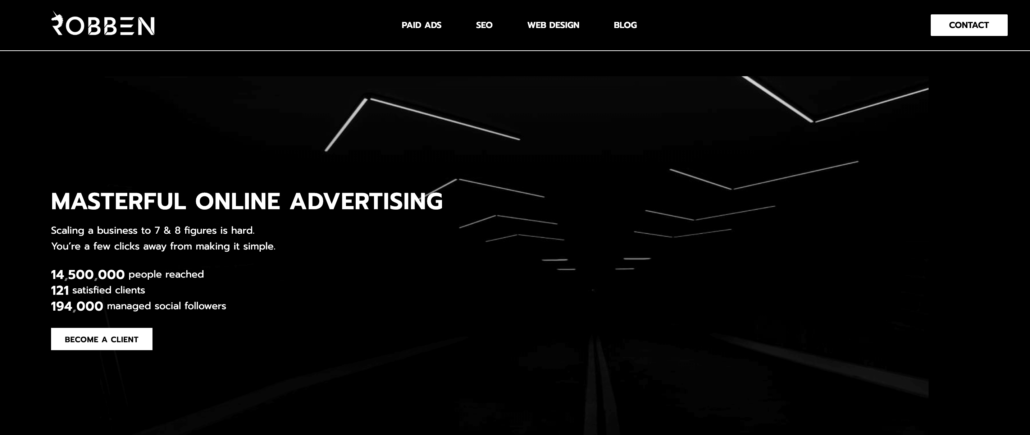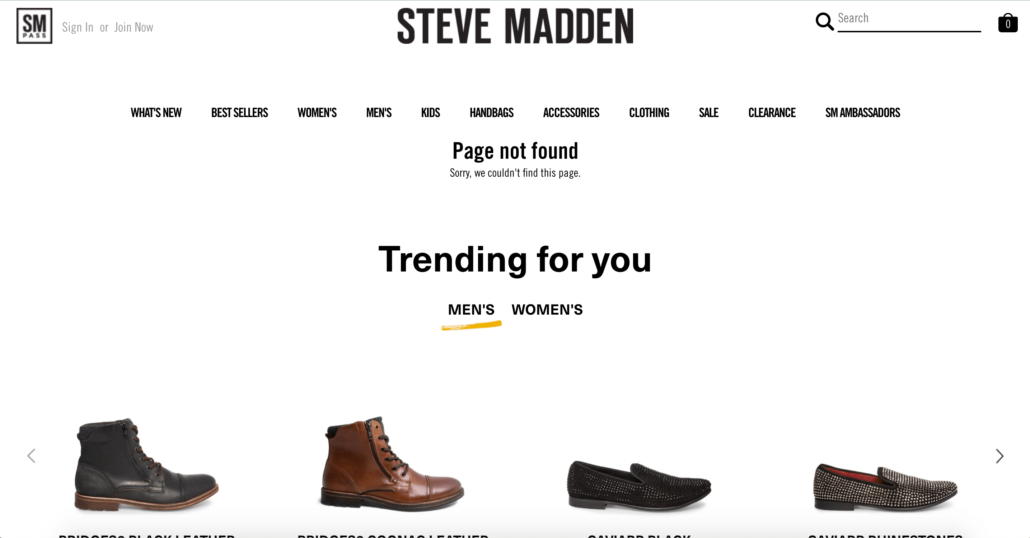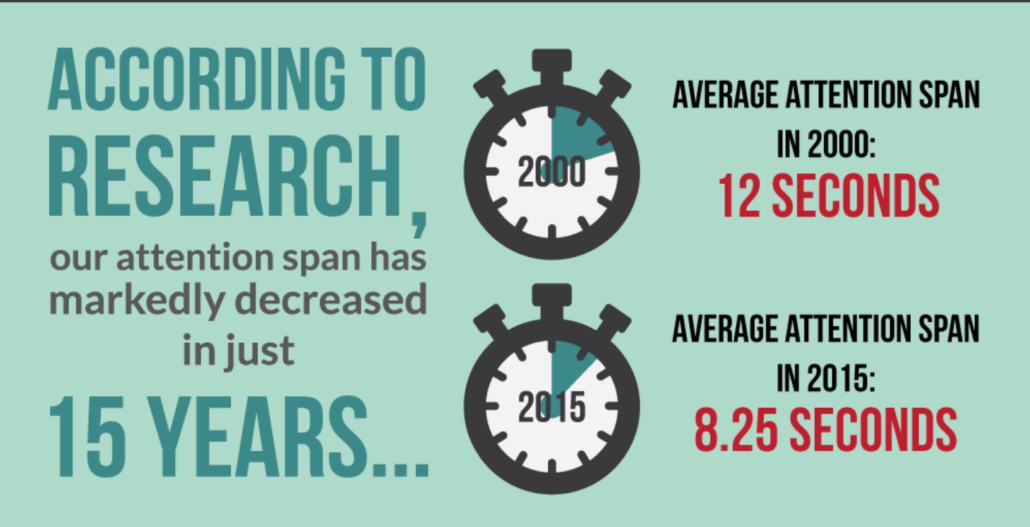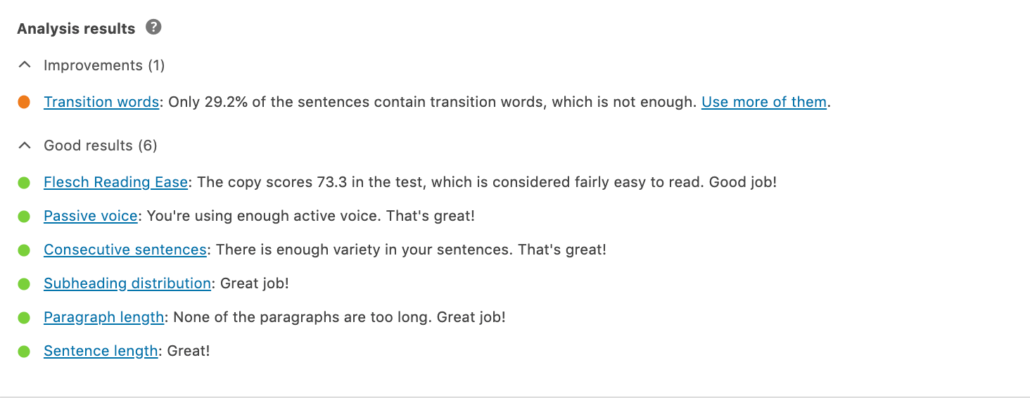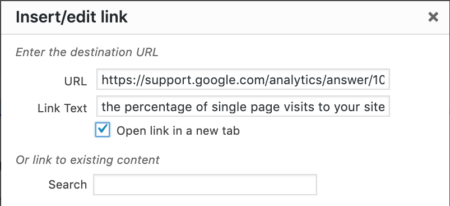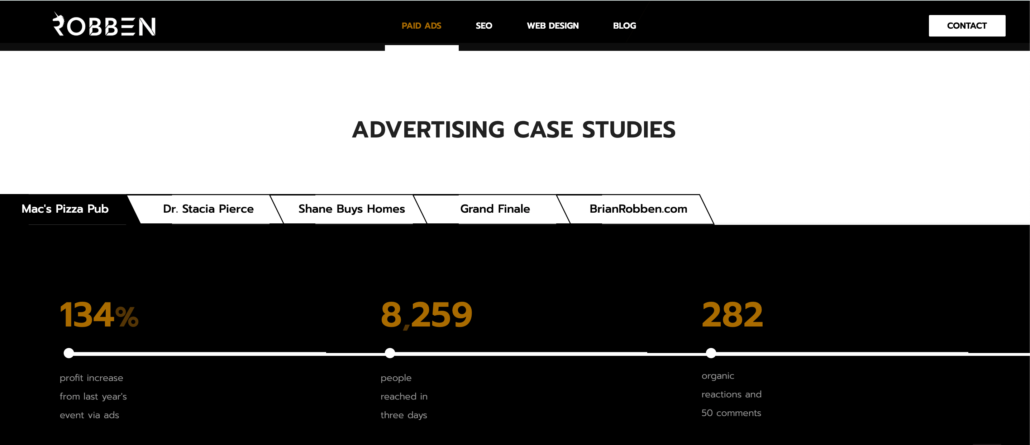Slow and steady wins the race. Right?
Wrong… when you know these 39 website traffic sources.
By implementing these tactics into your marketing strategy, your page views, leads, and sales will all hockey stick.
Why Is Website Traffic Important?
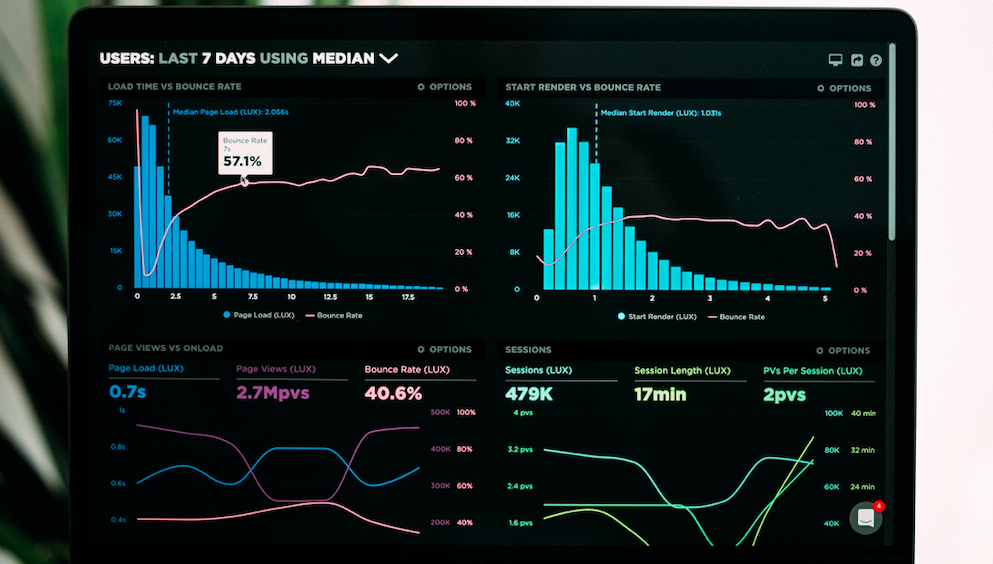
Before we talk about how to generate a flood of traffic, we first need to be on the same page.
Every time someone visits your website, an opportunity is created.
This opportunity could be:
- Creating a positive first impression that establishes brand loyalty for years to come
- Persuading a visitor to make a purchase off your site
- Getting someone to sign up for your email newsletter for future updates
- Having a fan share your site with their family and friends
The more traffic you get, the more chances your business has to win.
And those are just the short-term benefits of website traffic. This can be a long-term game as well.
High traffic numbers will grow your business. This will allow you to have the flexibility to create new product lines, hire more employees, and enter new markets.
We weren’t kidding when we said your website is a vital part of your business.
Now in terms of the traffic, you want to aim for quality over quantity. Quality traffic will drive purchases and repeat visits to your site. Quantity without the quality will leave you disappointed and poor.
In other words, the amount of traffic you have doesn’t matter if it isn’t converting and increasing your profits.
Now that you know the power of quality website traffic, let’s talk about how to generate it at scale.
39 Website Traffic Sources To Level Up
Before we talk about specific sources, there are six categories that sources fall under:
- Search traffic comes from a search on a search engine, like Google
- Social traffic comes from a post on a social media platform, like Facebook
- Paid traffic comes from a paid advertisement, like a YouTube ad
- Email traffic comes from an email campaign
- Referral traffic comes from another website that shared your URL
- Direct traffic comes from a user typing your domain into a browser
All of these categories have specific techniques that generate traffic.
Now, to the list!
1. Social Ads
Social ads are any paid advertising that you publish on social media.
The goal of paid advertising is to get users to your website to make a purchase.
Each platform does their paid advertising differently. So you will need to create your posts to comply with the individual platforms.
For example, your Instagram posts should have a high quality picture paired with a compelling copy to encourage users to click on the link to your website. And videos do extremely well for our Facebook advertising agency customers.
Paid advertising is a major source of your website traffic. You’ll want to spend considerable time on this to achieve best in class results.
2. Display Ads
Display ads are another form of paid advertising.
You can find these as a banner at the top or side of a website, app, and video page.

Take this article on Forbes. Verizon is advertising on both the top and right side of the article.
Clicking on either will take a user to a landing page on their website. From there, the user can decide to stay on that page and make a purchase, or explore their website further for other deals.
Display ads will attract the viewers of the website you advertise them on.
If you want to diversify your traffic in front of a targeted readership, display ads won’t let you down.
3. Pay-Per-Click Advertising
Pay-per-click (PPC) advertising means the advertiser (you) will pay the publisher (the ad provider) every time the ad is clicked.
You are paying to generate traffic in hopes that the traffic converts and you end up ROI positive.
This is a great way to track the amount of traffic you generate because it correlates to how much you’ve paid for the ad.
Then you can reverse engineer your average lifetime customer value by your PPC cost to see how many clicks you’d need to make a profit, or break even. When running PPC campaigns, look into callout extensions — they’re very underrated!
4. Search Engine Optimization (SEO)
Search Engine Optimization, or SEO, is the skill of utilizing keywords to organically reach top results on search engines. When a user types in a specific keyword on Google, for example, your post will show up first if you have the most optimized page on the internet for that keyword. Users most often click on the top result and this brings them to a sales opportunity on your site. SEO can take some time to master, and understanding the relationship between website traffic and revenue is crucial. For more insights, check out this article on Maximizing Revenue through Website Traffic. We want to see you succeed, and that’s why we offer SEO services to rank you at the top of Google and acquire new customers. I’d honestly put our company up against any competitor in this service.
5. Social Sharing
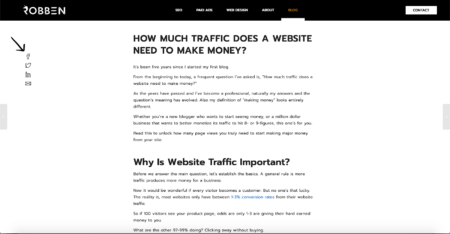
Social sharing is an extremely valuable source of traffic. We recognize this and include share options on all of the content we produce.
When someone shares a blog post to their Facebook audience, this immediately expands your reach to their friends and family. All it takes to score big is for one fan to spread your content to a thousand of their friends who also give you their money.
You can also encourage readers to share your posts by adding a call-to-action at the conclusion of each piece of content. Never sleep on the power of social shares.
6. Business Listings
Every business should have listings on websites related to their niche.
First, creating a profile on these platforms and verifying the information add credibility to your business. Second, many users rely on these types of websites to find recommendations of places to visit.
Plus, your business won’t seem legitimate if you don’t have a verified business listing with an updated address, URL, and phone number.
Once you do this, you will see more traffic visiting your website by one listing or another.
7. Online Reviews
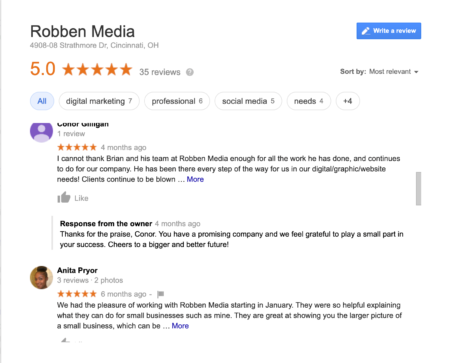
You might not think of online reviews as a source of traffic.
But you would be surprised at how much sway online reviews have over a user’s decision to visit a website.
Get this: 72% of consumers said they had to read a positive review before they take any action with a business. Positive reviews are like two axes in the hole.
Never forget that people trust what others have to say, and having satisfied customers to back you up is a critical source that generates traffic.
8. Producing Quality Content
Any content you produce needs to be exceptional quality, or you’re wasting your audience’s and your own time.
Your posts should be well-written, photos should be high resolution, and videos should be crystal clear.
Having A+ content proves to the viewer that you go the extra mile to give them value with everything you do.
This move encourages them to visit your website and see what else you have to offer. Then, when they’re on the fence about purchasing, they’ll remember your excellent content and make the purchase decision in your favor.
9. Social Media
Social media can be extremely unpredictable with constantly changing algorithms.
Though we’ve found posting consistently can lower some of the unpredictability.
Posting as often as possible, while maintaining quality, is the way to do it.
Once you figure out how to get your posts seen, compel users to visit your website in your captions.
From then on, social media will become a source that steadily generates traffic.
10. Guest Blogging
Guest blogging is when you write a blog post for someone else’s website.
You should jump at any opportunity to guest blog—especially if they are also in your industry.
When you guest blog, write a post that is relevant to what you do and knocks the reader over in value.
This will direct some of the website readers to check out your site.
Why is this method so effective? Guest blogging expands your reach to an audience that is already interested in what you have to offer. We often place backlinks for our SEO customers using guest blogging.
11. Email
You need to have a set plan for your emails to make sure you’re consistently interacting with your subscribers.
The audience of your emails is going to be different than those who conduct searches on Google.
People on your email have already interacted with your website and are familiar with what you have to offer.
Letting them know about new products or offering them an exclusive offer is a new way to get them to return to your website.
Each email should include a link to your website to remind your subscribers how to find you.
12. Branding
Building brand awareness is a huge component of the direct traffic category.
People knowing your brand gets them directly to your website.
Having a well-known brand establishes you as a major player in your industry.
Many people are loyal to the brands they know.
In fact, 59% of shoppers prefer to buy new products from the brand they trust over brand they are unfamiliar with.
The more people that know who you are means the more people that will visit your website.
13. Influencers
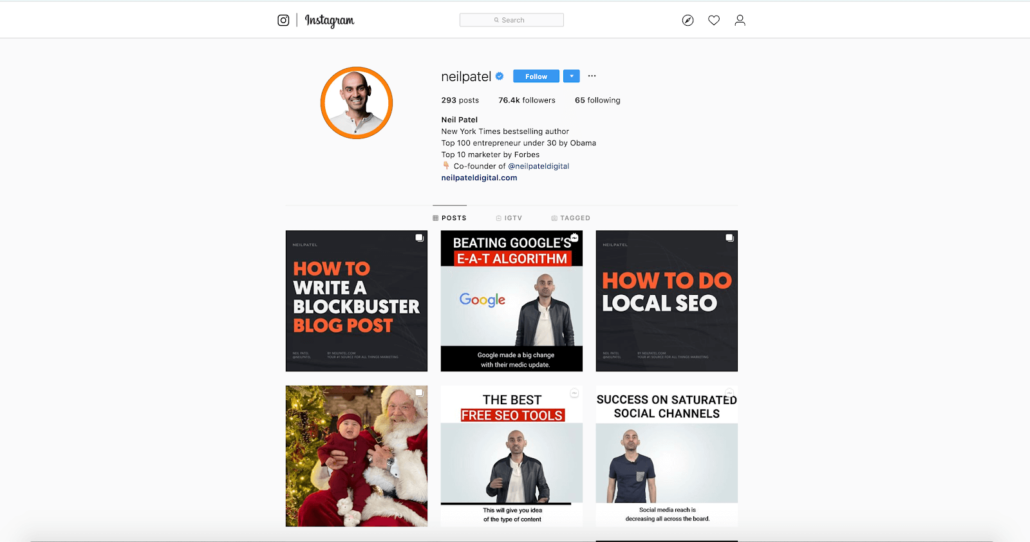
Influencer marketing will diversify the traffic that goes to your website.
Influencers don’t have to be celebrities. They are simply anyone that has a wide reach on social media.
Partnering with influencers to share your content will expose your brand to all of their followers.
The influencer you partner with should have some relevance to what you do. If their followers have absolutely no interest in your business, then you won’t generate anything from your efforts.
14. Google Adsense Auto Ads
Google Adsense is a service offered by Google that helps you publish ads.
They have added a new feature called auto ads that uses machine learning to figure out where to place each ad to see the best results.
This feature lets advertisers choose the best ads to display and the best location.
Auto ads also finds unused ad space to ensure that your ad will be seen.
You can use this feature to guarantee traffic growth and save yourself time compared to manual ad placements.
15. Clicks and Click Through Rates
Clicks are what actually get users to your website.
You want to monitor your click through rates to make sure that the clicks to your website are meaningful.
Click through rates measure how many people see a link and decide to click it.
You can use this to make sure that the traffic generated to your website is quality.
You can increase your click through rates by writing better copy that kills readers in its use of curiosity.
Edit your website titles and meta descriptions, social media posts, and emails for maximum click-interest and you’ll see your page views increase.
16. Referrals
Referral traffic comes from others linking to your website in their posts.
This can be on their social media, blog posts, website, etc.
You can use referrals to expand your reach. In fact, 71% of consumers are more likely to purchase a product from a referral.
This audience will likely trust the brand that referred you to lead them to credible businesses.
Users will be directed to your website and can explore around as they please.
How do you drive referrals? Start by being a good person in your industry and asking people, “How can I help you?”
Then you’ll see your referral traffic kaboom. This is the law of reciprocity.
17. Instant Messaging
Instant messaging is a form of direct traffic.
Some people prefer to share information via instant messaging. Audiences certainly feel more at ease in this informal setting.
This can be through Facebook Messenger, What’s App, or any other similar instant messaging platform
Users can share your brand name or a link to your website through instant messaging.
From there, the receiver can visit your website and see why the sender values your brand so much. You can add a chatbot to your Facebook page, and lead visitors to your site for a more intensive answer to their questions. Many companies do this well using a frequently asked questions (FAQ) page.
18. Campaigns
Consider running a social media campaign to advertise your products.
These campaigns differ from normal social media posts because they typically run for a set amount of time and advertise a specific product.
For each post of the campaign, it is crucial that you share some way to get to your website. It is likely that this will be a link to a landing page related to the campaign.
Your landing page should be beautifully designed so the user is encouraged to visit the rest of your website to see what you have to offer.
The longer you can get users to stay on your website the better.
19. Word of Mouth
Not all of your traffic comes from online sources.
Word of mouth is still a key source of traffic.
Did you know that consumers are 92% more likely to trust their peers over advertising when it comes to purchasing decisions?
When someone recommends your brand to a friend or co-worker, they are going to visit your website over your competitors.
This is why customer service is extremely important. You want to encourage your customers to recommend you to their circle of influence.
Also, don’t be afraid to talk your business up in person when people ask, “What do you do?” Tell them to view your site for more information. You never know what can come of it, or who they know.
20. Chatbots
A chatbot is an addition to your website and social media that serves to assist customers with their needs.
You can set up a business chatbot to direct customers to specific pages on your website that will answer their questions.
Chatbots operate 24/7/365. People who missed your customer service team will still be sent to your website. These chatbots should be loaded with different website pages to answer questions related to said pages.
21. Website Design
Traffic is one thing. Getting users to stay on your website is where the real challenge lies.
Having an exceptional website design is how to get users to stay and explore your site. Then a one page view visit turns into a seven. That adds up.
A good website should be sleek, simple and user friendly when your mission is to generate sales.
We offer website design services to ensure that you will retain your visitors and increase revenue.
22. Local Business Directories
Local business directories are an unexpected source of traffic to your website.
People look to business directories when they are trying to find recommendations for places to go in the area.
Most people prefer to shop local. In fact, 93% of shoppers prefer small and local retailers over large corporations.
Users can find your business in a directory and then go to your website to see what you have to offer.
It may not generate much traffic but it still is a source that you should consider when trying to increase your traffic.
23. Webinars
When 73% of B2B marketers swear by webinars as the best way to generate high-quality leads, I pay attention.
You can use webinars to increase your brand awareness and show users what value you can add to their lives.
Any webinar you host should include a link to your website.
In fact, you can put your webinars on your website so if someone missed it, they can still view it months after.
Webinars have been and continue to be a top sales generator.
24. Google My Business Listing
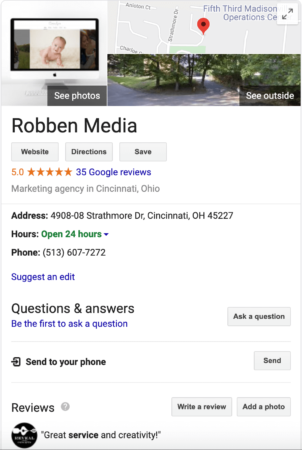
It’s crazy to not have a Google My Business account. Not only is it free, it’s effective for driving new business.
Definitely complete your profile. Completed profiles get 7x more visits than incomplete.
Having a verified Google My Business listing improves your SEO rankings as well.
The ultimate benefit is that it shows users exactly how to get to your website.
25. Free Guides
Similar to webinars, free PDF guides are a tool you can use to show users that you will be a positive addition to their life.
This guide should be relevant to your industry so readers know what you have to offer.
It can be beneficial to offer this guide electronically so you can include a call-to-action that takes readers to your website.
Readers won’t be able to see what they could gain from you if they have no way of reaching your website.
Here’s an example of one of our guides.
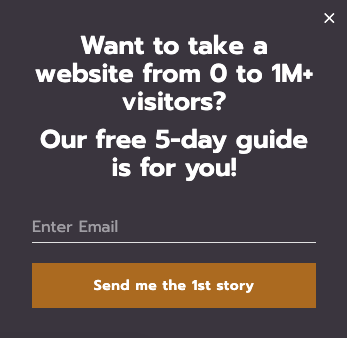
26. Join Online Groups
Twitter is a hub for conversation with people in related industries.
These conversations are usually structured where one account will lead the discussion and anyone is welcome to join in with their own input.
Joining in on these conversations will help you build relationships with others in your industry. You can use these relationships to promote each other’s content.
Offering valuable input in these conversations increases your brand awareness.
You can put a link to your website in your profile so users involved in the conversation know where to get more information about you.
27. A Compelling Call To Action

Having a compelling call to action is what will get a user from your content to your website.
A call to action is the click that will generate more traffic to your website.
You want the click, but where you should focus is writing engaging content that convinces the user to visit your site.
The call to action is simply the gateway that gets users to where they need to go to take action. Make it a curiosity-driven gateway with strong promises to improve your odds of success.
28. Google Ads
While we’re hesitant to run Google Ads for traffic, it’s far better to run them to product or service landing pages.
For keywords that are used a lot in your content, you can bid on them to get a top ranking spot whenever they are searched.
That is how paid Google ads work.
These posts will show up at the very top of the first page results. These go above organic search results.
You will want to do some keyword research before bidding so you know what people are searching for and what will not have much competition.
29. Repurposed Content
Publishing your content doesn’t mean that you can no longer use it.
You put a lot of hard work into your content, go reuse it every chance you get.
You can take content in one of your older blog posts to host a webinar or create an infographic.
This content is also still valuable to your viewers who don’t follow you on every platform. By repurposing your content in a different format, you can generate double the traffic you would have if you just left it.
30. Case Studies
Use case studies to persuade users that you will produce positive results.
Your customers will be given the opportunity to tell visitors why they should choose you to do business.
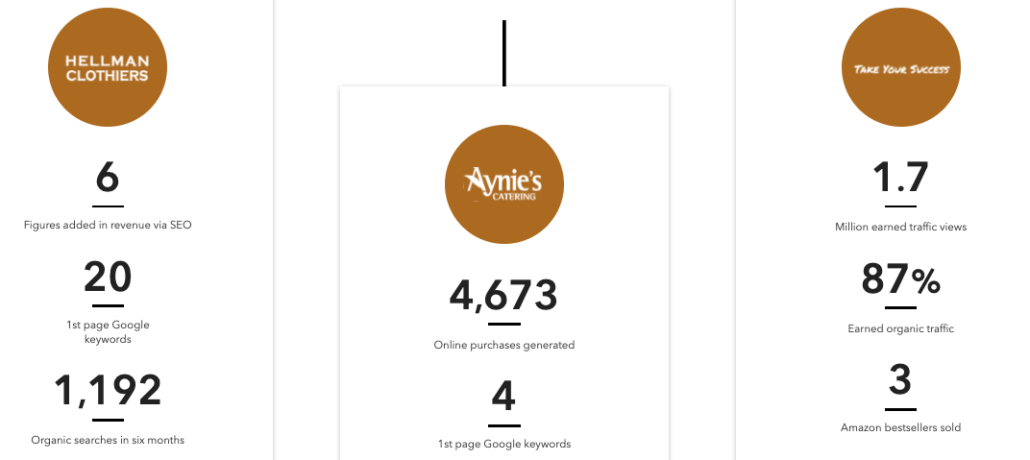
Take one of our case studies for example. You can find results from our partnerships with various customers. Not only that but you can see direct quotes from our satisfied customers.
Case studies will keep visitors on your website because they prove that you can provide value to them.
31. Podcasting
Podcasting is a platform where you can reach an entirely new audience than with your regular posts.
Stats show 51% of the US population has listened to a podcast. To me, that shows there’s an untapped market.
Listening to content can be much more convenient for people that don’t have time in their days to stay up to date in your industry.
By sharing your content in a podcast, you can reach people that may not have time to read your normal posts.
If your episodes are compelling, listeners will share your profile on their social media accounts and with their peers, recommend listeners visit your site at the end of each podcast episode, and link to your website in the podcast show notes.
32. Quora
We love Quora. This is an online platform where users ask and answer questions.
You can show off your industry expertise by simply answering questions.
You need to be careful on sites like these because you can’t outright advertise your business. People won’t think that you genuinely want to serve them.
The best way to get traffic to your website through Quora is to link to specific posts that relate to your answer. This way you are offering a more in-depth look at the question, while still giving value first.
33. Create Professional Infographics
Infographics are visual interpretations of data and statistics.
You can repurpose some of your content when you are creating an infographic to truly build up your topic authority.
Applications like Canva and Adobe Illustrator are tools you can use to create professional looking infographics.
Many content generators find infographics valuable to explain complex data. Others in your industry may use your infographic in their own posts, linking back to your website to give credit.
Don’t be surprised when you get double digit backlinks from an infographic.
34. Establish A Reddit Presence
Reddit is a platform that includes a variety of online forums.
In these forums, users discuss various topics and engage in conversation.
These conversations should be similar to Quora. You can’t outright advertise your business or else you will get shunned from the platform.
You need to naturally include ways to get to your website in these conversations. Otherwise, it will feel like you’re intruding in the conversation.
If the conversation turns a topic that you have written a post about, you can link it in your response for other users to refer to for more information.
35. Slideshare

Slideshare is a platform that offers you another way to repurpose your content. It is a feature of LinkedIn, and your LinkedIn profile will be associated with your slides. (Speaking of, here’s a LinkedIn lead generation strategy if you’re looking to grow your business there.)
The objective is to take your best content and transform it into an attractive slide deck.
Slideshare allows users to post slide decks for all to use and share.
Marketers love it, as slides on this platform go viral all the time.
If you go viral, your site will be drowning in traffic.
36. Retargeted Ads
Paid ads are not a one and done deal.
You can actually get a lot more out of retargeting ads than cold ads.
Showing your paid ads to people who visited your website will remind them that they should go back to your website.
That’s how you level up your ROI on ad spend.
37. Invite Others to Guest Blog
Guest blogging works two ways.
You can ask others in your industry to write posts for your site and then ask them to share the link when it’s published.
To gain momentum with this, create as many meaningful relationships with others in your industry as possible. There are many opportunities to promote each other’s content and increase both of your audience.
Having someone else write for you can switch up your content so users get different perspectives on topics.
When you have someone write a post for you, encourage them to share it on their own website and social media.
Their users will visit your page to read the post that your guest wrote.
They will likely be curious what makes you different than your guest and explore the rest of your website.
38. Reach Out to Industry Leaders
You can and should link to other websites in your blog posts.
When you do this, email the author of the post and tell them that you included them in yours.
Make sure to let them know that you find their content valuable. You should also politely ask if they would share your post to their followers.
Industry leaders typically have a large following so if they share your post, you will be reaching a wide audience of people that are interested in what you do and visiting your site.
39. Video Marketing

Wonder what’s the craze about video content? Besides tech giants like Facebook wanting to compete with YouTube, information retention is higher for visual material than text-based material.
If what you’re sharing is extremely important, a video might be the best choice to share it.
Videos grab your attention. You want to stand out when a user is scrolling through their feed and a video will get them to stop and pay attention.
Creating the video so it is professionally produced and has a compelling story line will be what gets users to visit your website.
Plus, Google owns YouTube and is known to promote YouTube videos at the top of Google search results. That’s a nice kicker.
Conclusion
You’ve seen there are an infinite amount of website traffic sources.
That’s not the issue.
The real question is what are you going to do with these traffic sources?
At this time of year, and any time of year really, it’s best to evaluate your plan to generate this traffic, build your brand, and drive new business.
What got you here, won’t get you to your next goals. So double down on what you’ve been doing or add a few of these website traffic sources if you’re serious about building a business.
What other sources do you know of that generate traffic to your website?


